New Zealand Heading Dog vs. Samoyed: Breed Differences and Similarities
Weight Gain Potential
Which breed eats more: New Zealand Heading Dog or Samoyed?
New Zealand Heading Dog has average obesity risk, needs balanced diet, daily walks, and weight monitoring.
Samoyed has high obesity risk, needs regular exercise and food control to maintain healthy weight.
Hypoallergenic
Are New Zealand Heading Dogs or Samoyeds hypoallergenic, or neither?
Unfortunately, the New Zealand Heading Dog is not hypoallergenic, making it not a good choice for a dog lover who suffers from pet allergies.
While no dogs are truly 100% hypoallergenic, Samoyeds are about as close as it gets, making them an ideal pet if you are an allergy sufferer.
Temperament
What are the personalities of New Zealand Heading Dog and Samoyed dogs?
Intelligent
Willing
Alert
Friendly
Playful
Stubborn
Lively
Intelligent
Sociable
Shedding Level
Do New Zealand Heading Dogs shed more than Samoyeds, or which breed sheds more, New Zealand Heading Dogs or Samoyeds?
New Zealand Heading Dogs are moderate shedders, but regular brushing can reduce shedding and maintain coat health.
Samoyeds shed a lot of hair each year, so frequent brushing is essential for reducing shedding and maintaining coat health.
Watchdog Ability
Which dog breed makes a better watchdog, the New Zealand Heading Dog or Samoyed?
New Zealand Heading Dogs are decent watchdogs - they'll alert their owner if something seems amiss.
Samoyeds make excellent watchdogs - they're vocal and protective of their territory.
Origin
What is the origin of New Zealand Heading Dog and Samoyed dog breeds?
New Zealand
Russia
Ancestry
What are the origins of New Zealand Heading Dog and Samoyed breeds?
Border Collie
spitz
Date of Birth
When were New Zealand Heading Dog and Samoyed breeds first developed?
1867
ancient times
Eye Color Possibilites
What are the eye colors of New Zealand Heading Dog and Samoyed dogs?
Brown
Amber
Brown
Nose Color Possibilites
What are the natural nose colors of New Zealand Heading Dog and Samoyed?
Black
Black
Coat Color Possibilites
What are the natural colors of the coat for New Zealand Heading Dog and Samoyed breeds?
Black
White
Fawn
White
Cream
Coat Length
What is the typical coat length for New Zealand Heading Dog and Samoyed breeds?
New Zealand Heading Dogs have medium-length coats.
Samoyeds have longer coats compared to most dogs.
Coat Density
What is the density of the coat of New Zealand Heading Dog and Samoyed?
Coat Texture
What is the hair texture of New Zealand Heading Dog and Samoyed?
Straight
Litter Size
What is the usual litter size for New Zealand Heading Dog and Samoyed?
New Zealand Heading Dog and Samoyed, can have a litter of 12-14 puppies each on average. Nonetheless, it's important to keep in mind that litter size can differ significantly between individual dogs. Various factors such as the mother's health, breeding history, and genetics can have an impact on litter size.
Adaptability
New Zealand Heading Dogs are highly adaptable and versatile, making them excellent companions for families and individuals of all lifestyles.
Samoyeds are known for their adaptability and can adjust well to different environments and lifestyle changes.
Health Issues
Between New Zealand Heading Dog and Samoyed, which breed is more prone to health problems?
New Zealand Heading Dogs typically have low vet costs due to their good health, but it's important to monitor their health and seek vet care when necessary.
While the Samoyed breed is generally healthy, occasional vet check-ups are still necessary to address any health concerns.
Major Concerns
What are the major health concerns for New Zealand Heading Dog and Samoyed breeds?
None Known
Hip Dysplasia
Minor Concerns
What minor health issues should be kept in mind when owning New Zealand Heading Dog and Samoyed?
Ear Health and Infection
Eye Infections
Progressive Retinal Atrophy
Allergies
Occasional Tests
What occasional tests are recommended for New Zealand Heading Dog and Samoyed breeds?
Ear Examination
Eye examination
Complete Blood Count
Regular Full Physical Examination By Veterinarian
Blood Glucose Tests
Eye
Hip
X-Rays
Eye Examination
Physical Examination
Allergy Tests
Energy
How do the energy levels of New Zealand Heading Dogs and Samoyeds compare?
New Zealand Heading Dog and Samoyed breeds are high-energy dogs, thus an active lifestyle suits them well.
Social Needs
New Zealand Heading Dog vs Samoyed social needs comparison
New Zealand Heading Dog and Samoyed have above average social needs compared to other breeds. They thrive in environments where they have a lot of interaction with humans and other dogs.
Exercise Needed
New Zealand Heading Dog vs Samoyed exercise need comparison.
New Zealand Heading Dogs need high physical activity and are ideal for active individuals, but not suitable for sedentary lifestyles or small apartments.
Samoyeds require significant physical activity and suit those with an active lifestyle.
Sleeping Need
Which of the two sleeps the most/least: New Zealand Heading Dog or Samoyed?
New Zealand Heading Dog and Samoyed are active dogs that may not require as much sleep as other breeds. However, they still need enough sleep to stay healthy.
Drooling Tendency
Which drools more/less, New Zealand Heading Dog or Samoyed?
New Zealand Heading Dog is an average drooler, monitor for excessive drooling which may indicate health issues.
Samoyed has low drooling tendency, suitable for those who dislike drool marks.
Tendency to Bark
Do New Zealand Heading Dogs or Samoyeds bark more/less frequently?
New Zealand Heading Dog dogs are generally less vocal than other breeds and only bark when necessary, such as to alert their owner or communicate.
Samoyeds bark moderately when necessary and may also bark due to certain triggers like fear, alarm, boredom, greeting, separation anxiety and compulsive barking.
Territorial
Is the New Zealand Heading Dog or Samoyed a better guard dog?
New Zealand Heading Dog dogs may not be the best choice as guard dogs because they do not have a strong instinct to defend their territory.
Samoyed dogs are highly protective and make excellent guard dogs due to their strong instinct to defend their territory and owners, and their high level of vigilance.
Mouthiness
Mouthiness Comparison: New Zealand Heading Dog vs Samoyed?
Roaming urge
New Zealand Heading Dog vs Labrador: Running away tendency?
Prey Drive
New Zealand Heading Dog or Samoyed - which breed has a higher level of prey drive?
Past times
What are some enjoyable activities and ways to keep New Zealand Heading Dog and Samoyed entertained?
Tramping, Fetch, Hunting, Walking, Playing, Running, Long, Basic tricks, Runs, Fetching balls, Walks
Talking, Barking, Ear rubs, Butt scratches, Sniffing, Eating, Being talked to, Walk, Run, Play, Petting, Go on Vacation, Catch treats, Shake, Heel, Walking, Playing catch, Smiling, Chasing, Running, Eating Snacks, Hiking, Tug, Swimming, Fetch, Snuggles, Go to Beach, Go to Park, Groom, Play fetch
Activity Level
Which breed has higher energy, New Zealand Heading Dogs or Samoyeds?
New Zealand Heading Dogs are high-energy dogs. They need mental as well as physical exercise. These dogs require a lot of your involvement and without it they can, and will, become problematic dogs.
Samoyeds are medium-energy dogs and typically enjoy socializing and playing casual or even sustained games of chase with other dogs. They may also have occasional periods of barking or racing around the house.
Tolerance of being left alone
Walks per Week
How many miles should New Zealand Heading Dog or Samoyed walk each week?
There's really no limit to how far you walk your dog as long as they're comfortable. For New Zealand Heading Dog, it's at least 30 miles / week. Just remember to build distance and stamina gradually over time.
There's really no limit to how far you walk your dog as long as they're comfortable. For Samoyed, it's at least 8 miles / week. Just remember to build distance and stamina gradually over time.
Activity per Day
Do New Zealand Heading Dogs or Samoyeds require more exercise?
In general most New Zealand Heading Dogs usually need at least 120 minutes of exercise daily. This can be spread across the day and include all sorts of high-energy activities, like walking, running and playing.
In general most Samoyeds usually need at least 60 minutes of exercise daily. This can be spread across the day and include all sorts of high-energy activities, like walking, running and playing.
Grooming
Which breed is easier to maintain in terms of grooming, New Zealand Heading Dogs or Samoyeds?
The New Zealand Heading Dog requires an average amount of grooming compared to other breeds.
Samoyeds require significant grooming, including regular trims and professional grooming assistance to maintain their coat. They may also require frequent bathing to keep their coat and skin healthy.
Brushing Frequency
What is the recommended brushing frequency for New Zealand Heading Dog and Samoyed dogs?
New Zealand Heading Dog and Samoyed should be brushed at least once a week. Of course, you can give them more frequent brushes if you find that they are still shedding a lot.
Brushing Tools
What brushing tools are used for New Zealand Heading Dogs and Samoyeds?
Pin Brush
Slicker Brush
Deshedder
Nail Clipper
Pin Brush
Comb
Nail Clipper
Cups
How much food should be given to New Zealand Heading Dog or Samoyed in cups?
For an average 55-66 pound (25 - 30 kg) New Zealand Heading Dog feed 3 cups daily. But, keep in mind, the amount you feed is going to be dependent on the quality of the food you are feeding.
For an average 45-65 pound (20 - 29 kg) Samoyed feed 2.8 cups daily. But, keep in mind, the amount you feed is going to be dependent on the quality of the food you are feeding.
Daily Cost
Which breed has a higher daily cost, New Zealand Heading Dog or Samoyed?
The average cost of a New Zealand Heading Dog is somewhere $2.10 - $2.70 per day.
The average cost of a Samoyed is somewhere $1.70 - $2.00 per day.
Monthly Cost
Which breed has a higher monthly cost, New Zealand Heading Dog or Samoyed?
The average per month expenses of a New Zealand Heading Dog is between $55 - $73. This makes an average of $660 - $876 per year. It will be on the higher side when the dog is still small because it will need more frequent visits to the vet, shots.
The average per month expenses of a Samoyed is between $48 - $63. This makes an average of $576 - $756 per year. It will be on the higher side when the dog is still small because it will need more frequent visits to the vet, shots.
Intelligence
Comparing Intelligence: New Zealand Heading Dogs vs Samoyeds
The New Zealand Heading Dog and Samoyed breeds are considered very intelligent and easy to train.
Sensitivity Level
How do New Zealand Heading Dog and Samoyed compare in sensitivity?
This breed is sensitive to its environment and best suited for patient and understanding families with a consistent routine.
Samoyeds are adaptable and resilient, making them ideal for those seeking a less sensitive pet.
Affection Dependance
Which is the more affectionate dog breed: New Zealand Heading Dog vs Samoyed?
Apartment Friendly
Which breed is more apartment-friendly: New Zealand Heading Dog or Samoyed?
New Zealand Heading Dogs can do well in apartments with enough exercise and time outside, but a small yard would be ideal.
Samoyeds are good apartment dogs as long as they get enough exercise and stimulation outside of the apartment.
Child Friendly
Do New Zealand Heading Dogs or Samoyeds have a friendlier temperament towards children?
New Zealand Heading Dogs are good with kids if socialized and trained from a young age.
Samoyeds make excellent family pets for kids due to their gentle, protective nature and calm temperament.
Senior-friendly
Which dog is more suitable as a pet for the elderly - New Zealand Heading Dog or Samoyed?
Cat Friendly
Do New Zealand Heading Dog or Samoyed breeds have a better compatibility with cats?
New Zealand Heading Dogs are good with cats, but early training is needed to prevent chasing behavior.
Samoyeds are average in their friendliness toward cats and tend to do well with them, especially if raised together.
Dog Friendly
Which breed is more sociable with other dogs: New Zealand Heading Dog or Samoyed?
New Zealand Heading Dogs are generally very friendly towards other dogs, with a happy and affectionate temperament.
Samoyeds are friendly and active companions, and can be good family pets, though their friendliness towards other dogs may vary.
Pet friendly
How do New Zealand Heading Dog or Samoyed dogs interact with other pets?
Stranger Friendly
Which breed is more friendly with strangers: New Zealand Heading Dog or Samoyed?
New Zealand Heading Dog and Samoyed are average friendly around strangers. They can be wary around strangers and a little standoffish, so early socialization is key to ensure they are comfortable around new people.
Playfulness
Which breed is more playful between New Zealand Heading Dog and Samoyed?
New Zealand Heading Dogs are a playful breed that needs daily playtime to be happy.
Samoyeds have an average level of playfulness, enjoying playtime like most dogs but not excessively so.
Trainability
How do the trainability levels of New Zealand Heading Dogs and Samoyeds compare?
The New Zealand Heading Dog is highly intelligent and eager to please, making it a great choice for both novice and experienced dog owners due to its easy trainability.
Samoyeds are popular for their ease of training and quick learning ability.
Compare New Zealand Heading Dog with other breeds

Pug-Zu
New Zealand Heading Dog vs Pug-Zu

Akita Inu
New Zealand Heading Dog vs Akita Inu

English Cotralian
New Zealand Heading Dog vs English Cotralian
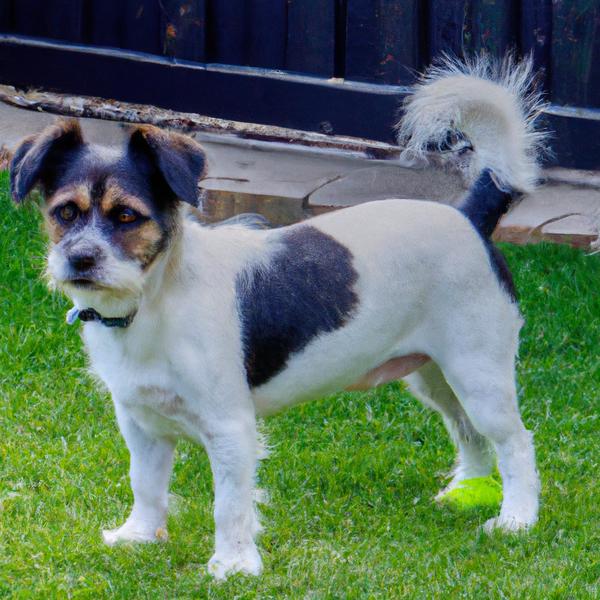
Silky Jack
New Zealand Heading Dog vs Silky Jack
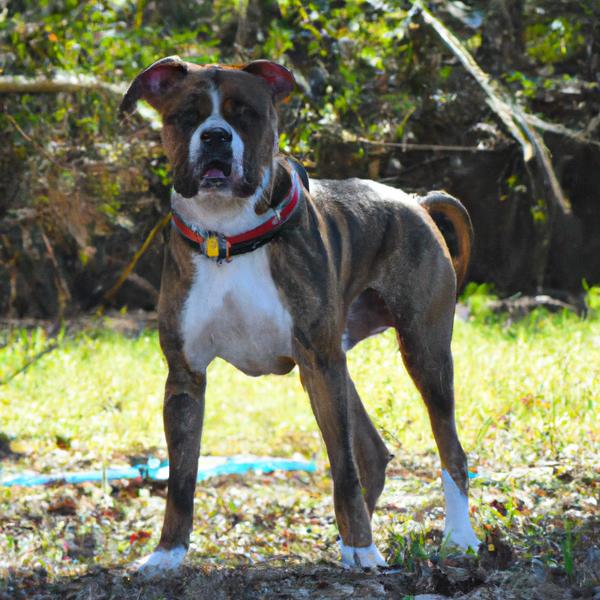
Bowzer
New Zealand Heading Dog vs Bowzer
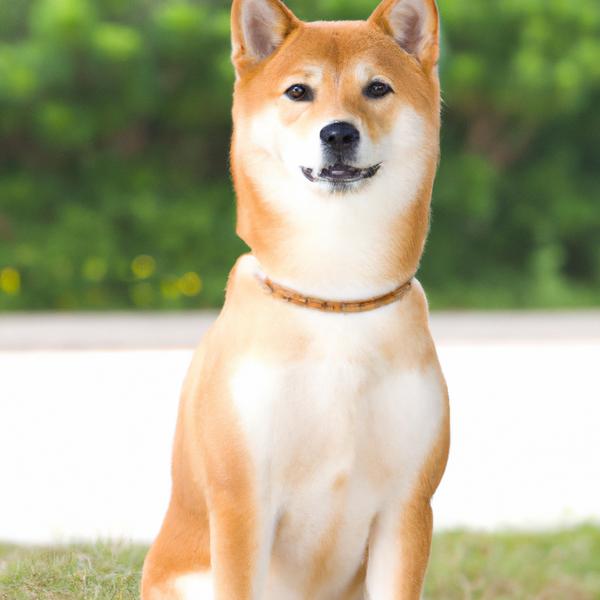
Shibos
New Zealand Heading Dog vs Shibos

Rhodesian Ridgeback
New Zealand Heading Dog vs Rhodesian Ridgeback
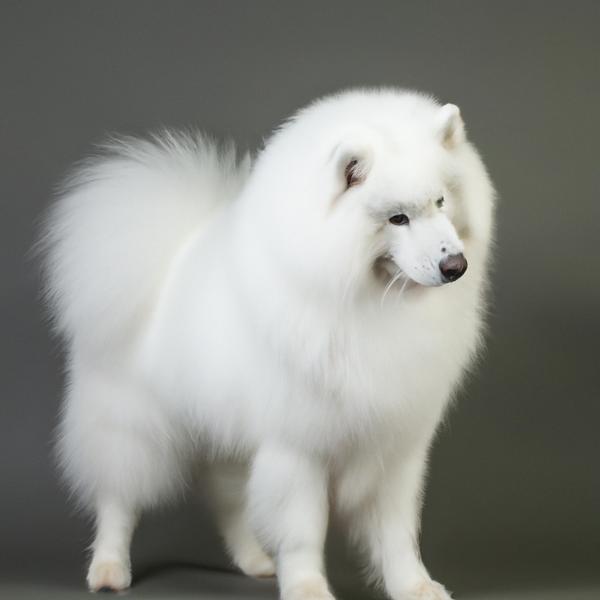
Samoyed
New Zealand Heading Dog vs Samoyed

Crested Peke
New Zealand Heading Dog vs Crested Peke
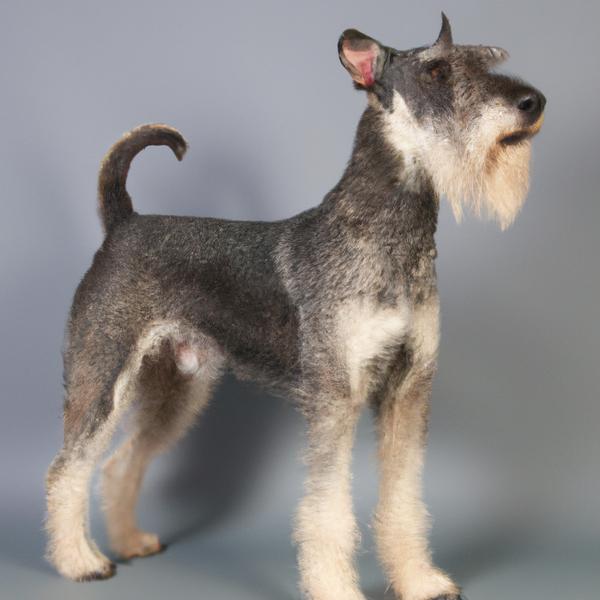
Standard Ratzer
New Zealand Heading Dog vs Standard Ratzer

Beagle Point
New Zealand Heading Dog vs Beagle Point
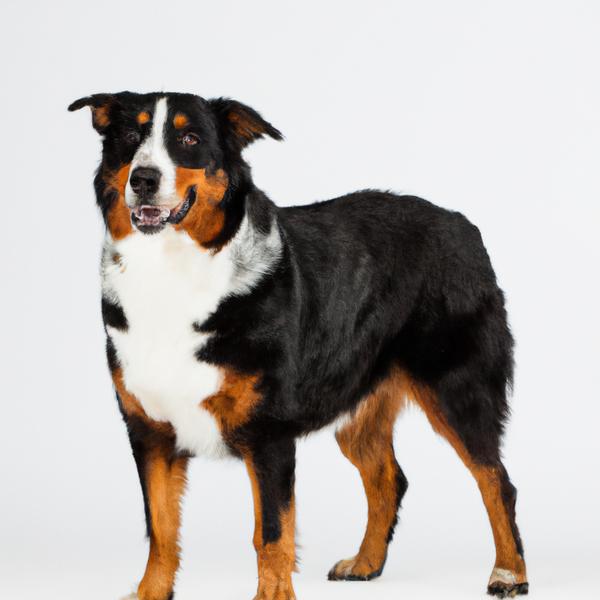
Bernese Cattle Dog
New Zealand Heading Dog vs Bernese Cattle Dog
